Flexibility, Climbing and Performance; What, Why and How? Part 2.
Why is flexibility so important? As previously mentioned in part 1, climbing offers endless movement opportunities and many of these will require a great level of flexibility. Increasing my own level of flexibility in the pursuit of climbing performance, has made me realise you do not know what you are missing until you have it.
Movement options such as a very high heel, or far away feet, don’t even register until it becomes a viable option. However, increasing flexibility is not necessarily of equal importance for every climber!
I’ll break it down for some different disciplines below…

Trad Climbing: Characterised by more static movements and often following more obvious or significant features of the rock e.g. crack lines.
In general, a high degree of flexibility is not as required compared to other disciplines, however, as we know every case is induvial and certainly, I can think of some extreme stemming/bridging corners that requires a high level of hip adductor flexibility.
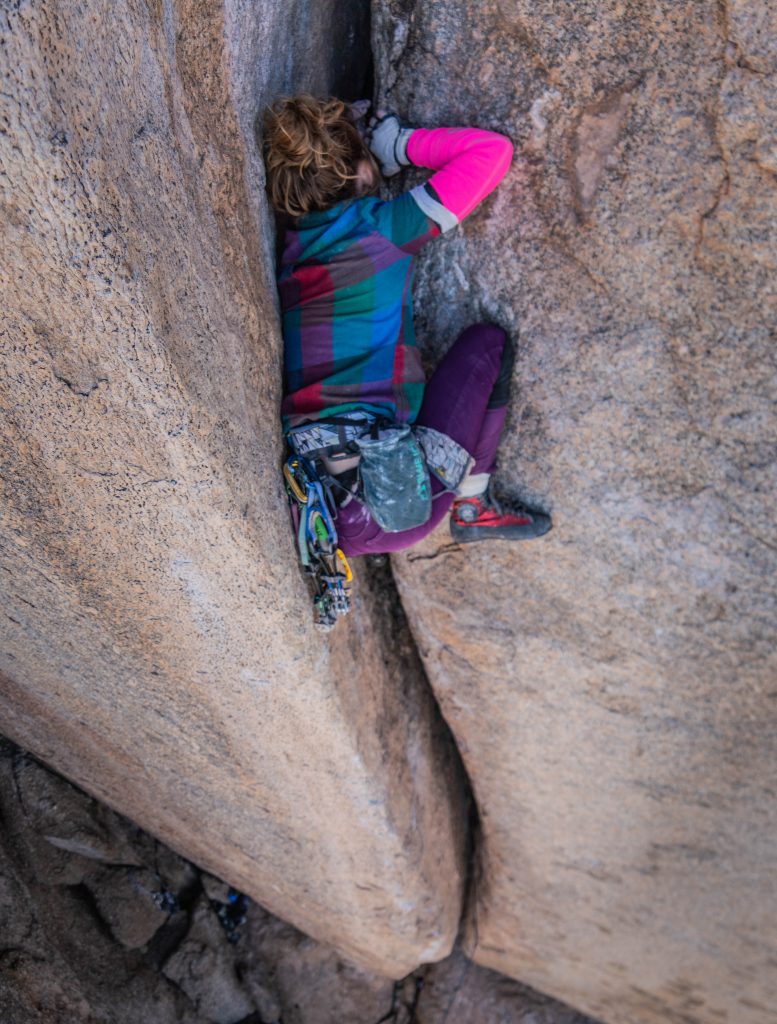
~ Mary Eden (@tradprincess) on Beelzebub, photo by Sam Foreman
Sport Climbing: This can vary massively from blank face climbing, requiring your hips to stay as close to the wall as possible, or steep roof climbing requiring deep drop knees between tufas. Shoulder flexibility may be a limiting factor for some as the vertical climbing needs a good amount of overhead shoulder flexion.
The fact is, flexibility can greatly improve your efficiency of movement, compounding and improving your capacity to do move after move. Therefore, sport climbing demands a good level of flexibility to improve feats of endurance.

Bouldering: Generally steeper and more powerful. Climbing tends to be more 3D meaning things like bringing your feet to your hand holds is often particularly useful. On less steep terrain the hand holds can be desperately small, so the more weight you can get on your feet the better.
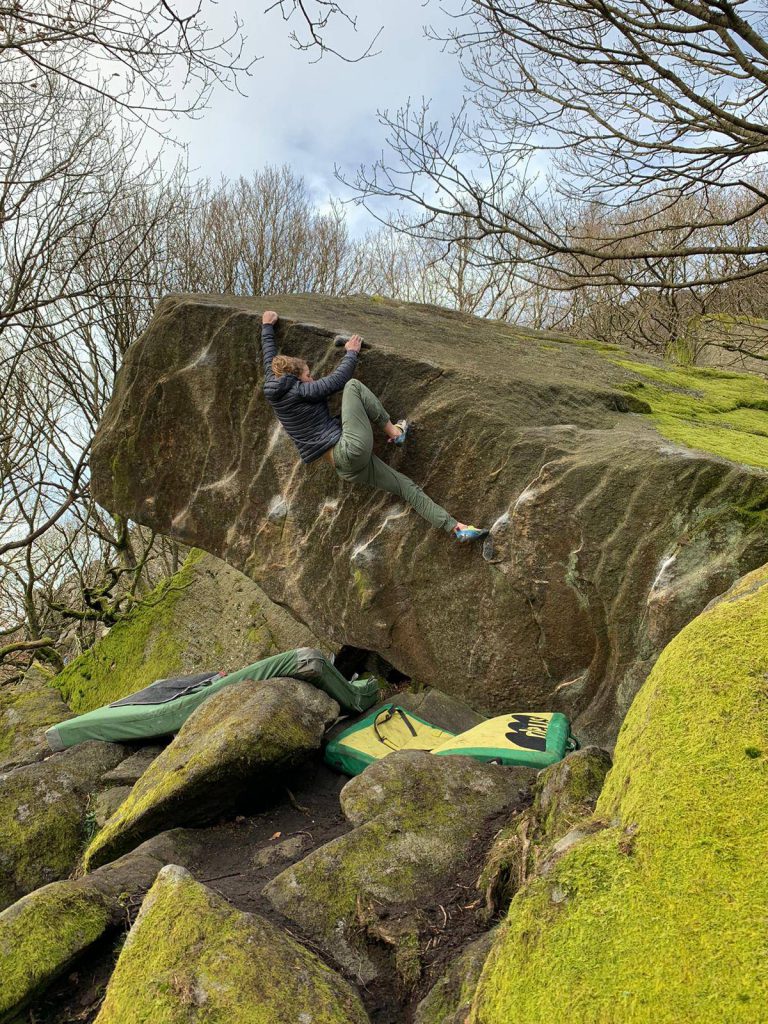
Competition Climbing: Modern day route setting (not inc. Speed) is all about big “showy” moves to captivate the crowd. This means big moves and crazy body positions. Its not uncommon to see the elite athletes of today go into full splits on the wall or rock-over on a heel hook that looks downright impossible.
These athletes need the greatest level of flexibility when compared to any other disciplines. These same athletes often do “OK” outside and very frequently show us how they can put that elite level of flexibility to use on real rock.
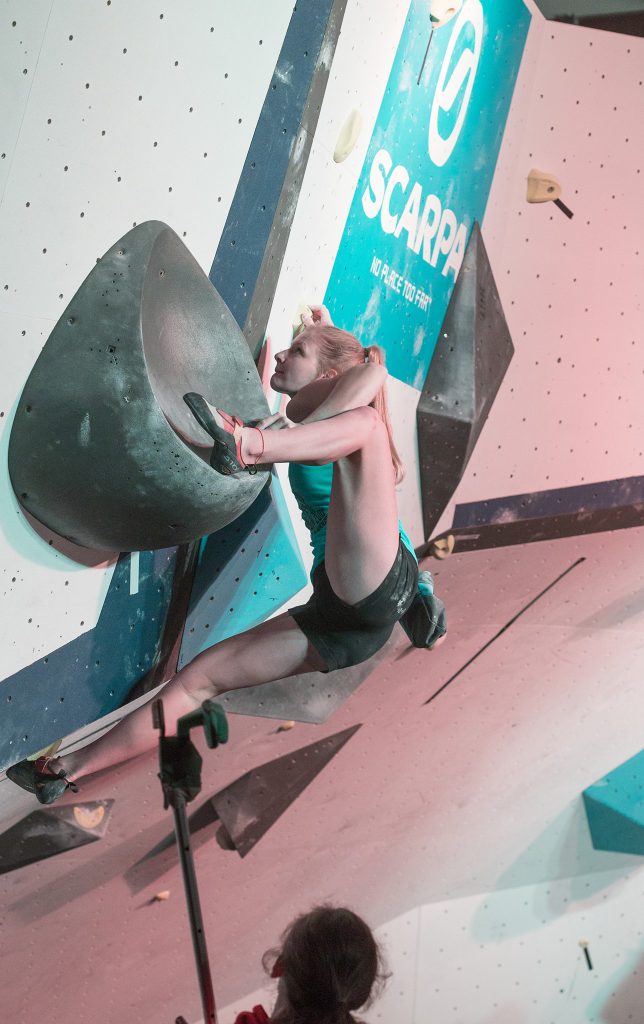
~ GB climber and Lattice coach Jen wood, photo credit Craig Bailey
How will it improve my performance?
New Range, New Strength – More Strength!
If you ever feel weak in those really stretched out positions, its probably because you are. A muscle will want to produce less force in a very lengthened state as a protective mechanism against injury. If we increase the muscles flexibility, alongside strengthening it through its new range, you will get stronger in stretched out positions.
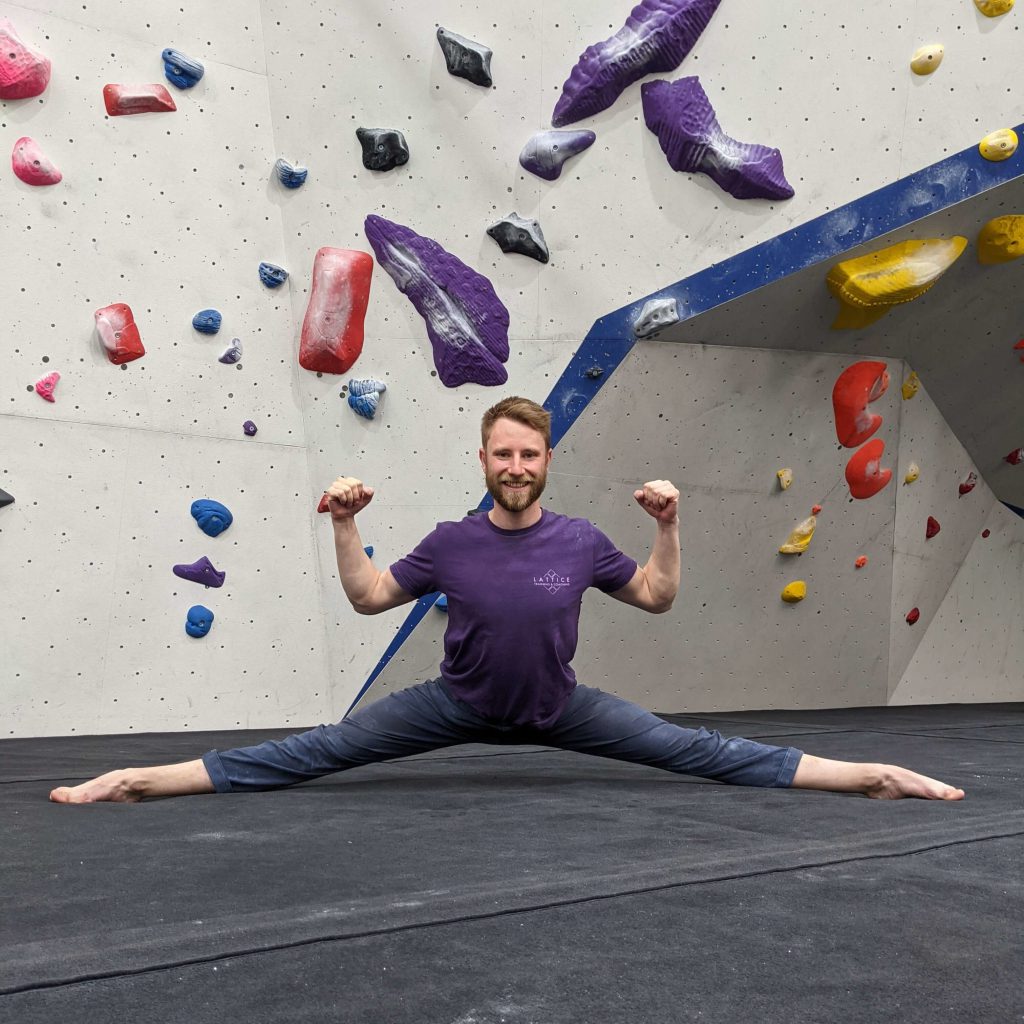
Reduced tension – More Strength-Endurance!
Inflexibility may be holding you back, literally. If you have ever felt like you had to fight against your tight hamstrings to reach a foot hold you were probably using more energy that you needed.
A good example of this is doing the toes-to-bar exercise. If you can do this without your bum lifting up you have good hamstring flexibility and need to engage less muscle mass to lift your toes to the bar. However, if you end up in a semi lever lift position with bent legs, you are engaging your upper body to compensate and using more energy than necessary.
This also demonstrates why “inflexible” climbers need so much more strength to achieve the same performance as their flexible counterparts. This is an example of how increasing flexibility decreases a kind of tension our own body gives us during movement. Some will say this tension is a good thing as it acts a spring or passive tension for more powerful movements. Personally, I believe this rarely outweighs the cost of limited movement and being able to find effective body positions. Climbers can be flexible and strong!
Because a climb is rarely just one move, less tension from antagonist muscles equals better endurance alongside strength.
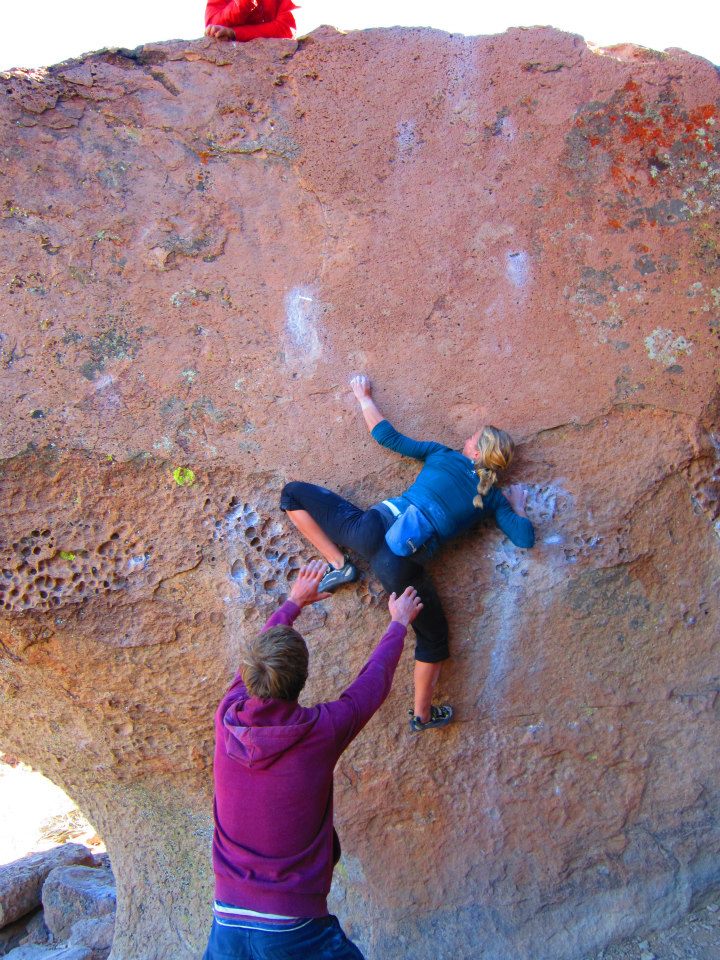
Better Movement Efficiency – More Endurance!
Similar to the above our efficiency of movement, which essentially means the energy cost to perform a task, drastically improves when we can find easier body positions and get more weight onto our feet.
Better flexibility that helps with movement efficiency means you will be able to climb harder and for longer for the same energy cost, compared to your inflexible counterpart. Here at Lattice, one theory is the physical strength (finger strength, pull-ups etc.) disparity we see between male and female climbers for any given grade if offset by the greater level of flexibility in the female population.
This is not a rule of course, just an observation in the number of assessments we see. Some will argue that females are naturally more flexible. This may be true; however, it is not an excuse! Research shows males much more easily put on upper-body muscles mass and strength, this should not put off women from training to get stronger. So, men should not turn away from training flexibility, saying “I’m just not flexible”.
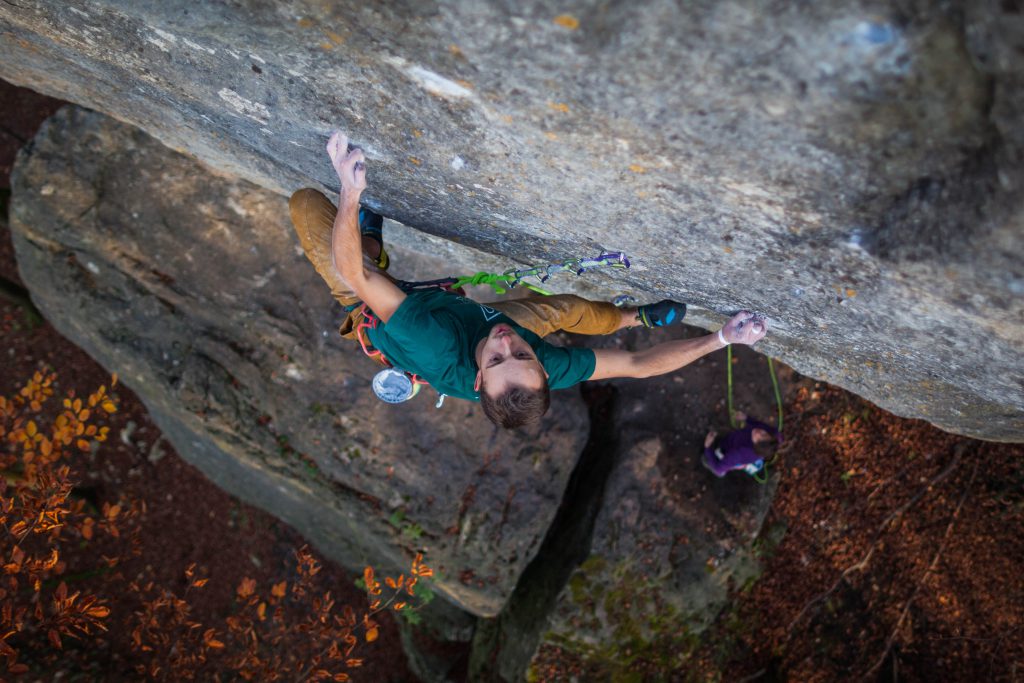
~ Moritz Welt, photo by Lars Decker
More Movement Option – Skill!
The best benefit, in my eyes, is opening a whole new range of movement options and body positions. It just makes climbing more fun! That foot is no longer “too far away” or that heel hook “makes the crux of this boulder easy!”. It may be as simple as being able to open your hips more makes a previously impossible move possible. We can see this even at the top level of competition climbing where an extremely flexible climber comes out to break the intended beta of the route setter or they make it look easy due to the body positions they find. Adam Ondra does this regularly!
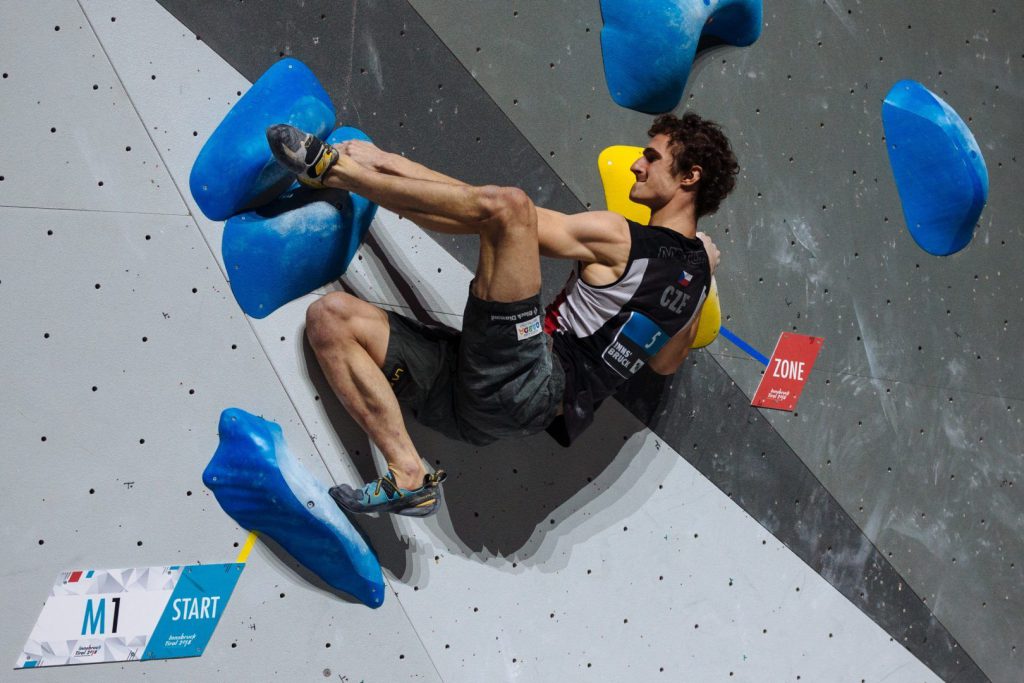
~ Adam Ondra at the World Championships Innsbruck 2018, photo by Lukas Biba
Thanks for coming back to read Part 2, check out Part 3 to get some methods in your bag!






